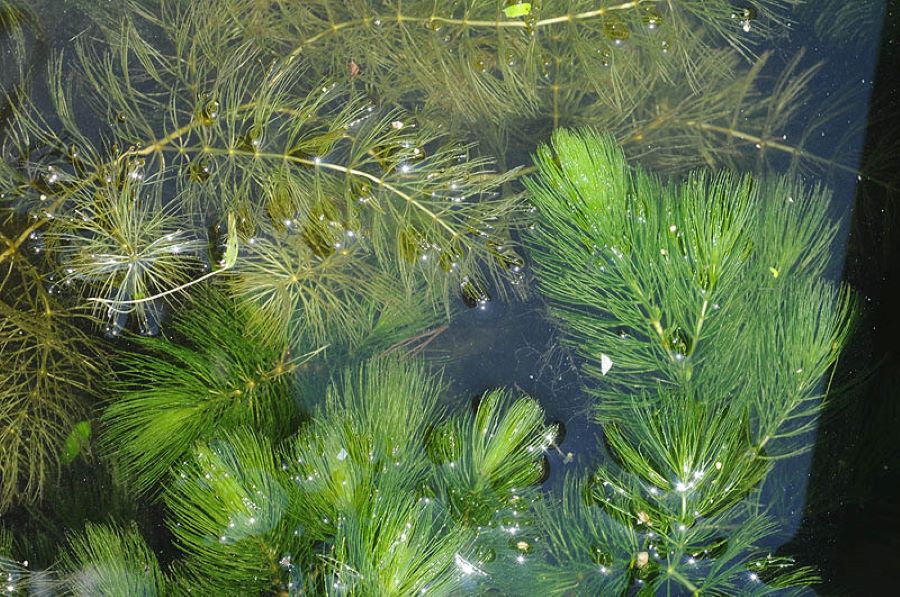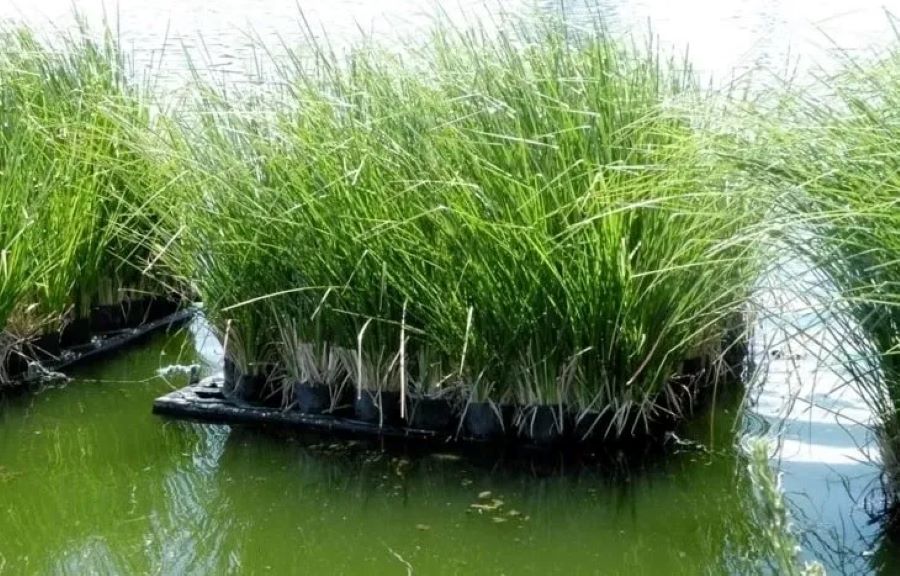Finding environmentally friendly wastewater treatment solutions is becoming increasingly essential as water pollution continues to worsen. One outstanding method today is the treatment of wastewater using aquatic plants – a biological technology based on the ability of aquatic plant species to absorb and transform pollutants. This method not only effectively removes organic contaminants, heavy metals, and harmful microorganisms but also contributes to landscape enhancement, biodiversity protection, and sustainable development.
Wastewater treatment using aquatic plants is an eco-friendly biological method that utilizes water-based plant species such as water hyacinth, vetiver grass, water spinach, or lotus to absorb, transform, and remove pollutants from wastewater. Thanks to their ability to absorb nutrients, heavy metals, and organic compounds, these plants help clean water naturally, cost-effectively, and can be applied in many areas, especially rural regions or places with limited technical infrastructure.
Aquatic plants are species that grow and develop in water or waterlogged soils. Their root, stem, and leaf structures are adapted to low-oxygen conditions. Beyond their treatment benefits, these plants help stabilize aquatic ecosystems, provide habitat for aquatic organisms, and create green, natural landscapes.

Wastewater treatment using aquatic plants is an environmentally friendly biological method.
Aquatic plants are classified into groups based on growth characteristics and habitat. Each group plays a specific role in balancing ecosystems and supporting the natural purification of water.
Floating plants are commonly used due to their ability to grow quickly and absorb nutrients directly from the water. Typical species include water hyacinth, duckweed, and water spinach, which effectively absorb organic matter, nitrogen, and phosphorus, helping reduce eutrophication. They also provide shading that limits harmful algal growth.
This group consists of species fully submerged in water such as hornwort, elodea, and hydrilla. These plants help increase dissolved oxygen levels, provide habitat for aquatic life, and support water clarity.
Species such as lotus, water lily, bulrush, and vetiver belong to this group. Their root systems grow deep into sediment, absorbing pollutants and enhancing natural filtration. Meanwhile, stems and leaves above the water surface contribute to landscape value and ecological stability.
The treatment process involves multiple physical, chemical, and biological interactions supported by plants and microorganisms.
Solid particles settle by gravity, reducing turbidity. Plants support hydraulic stability but do not directly remove solids in this stage.
Microorganisms living on roots and stems break down organic substances into simpler, non-polluting compounds, improving water transparency and quality.
Nitrogen is removed through plant absorption, ammonia volatilization, and microbial nitrification–denitrification under alternating aerobic and anaerobic conditions.
Phosphorus is removed through plant uptake, microbial incorporation, and precipitation with metal ions such as Ca²⁺, Mg²⁺, Fe³⁺, forming insoluble compounds that settle out.
Aquatic plants absorb and accumulate metals such as Pb, Cd, Zn, and Cu in roots and tissues, reducing toxicity levels in the water.
Bacteria and viruses are reduced through natural lysis, sunlight exposure, sedimentation, and microbial competition, making treated water safer.

The wastewater treatment process using aquatic plants utilizes a system of aquatic vegetation combined with microorganisms to remove pollutants from wastewater.
The aquatic plant treatment method is a sustainable, low-cost, environmentally friendly solution that removes suspended solids, organic matter, nitrogen, phosphorus, heavy metals, and harmful bacteria. It requires minimal maintenance and causes no secondary pollution, making it highly suitable for residential areas, rural regions, and communities pursuing ecological sustainability.
Dai Nam Environmental Solutions
To address diverse and large-scale wastewater treatment needs, many businesses are adopting modern industrial wastewater treatment systems. Dai Nam Environment Solutions Co., Ltd. has successfully deployed a wide range of advanced wastewater treatment solutions that ensure treated water consistently meets environmental discharge standards.
For direct consultation on suitable wastewater treatment solutions,
Contact: 0909 378 796 for prompt support.